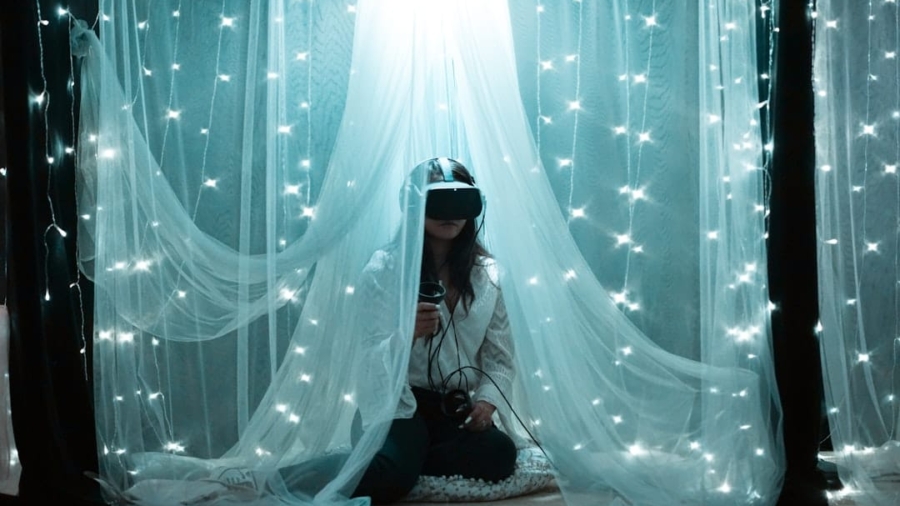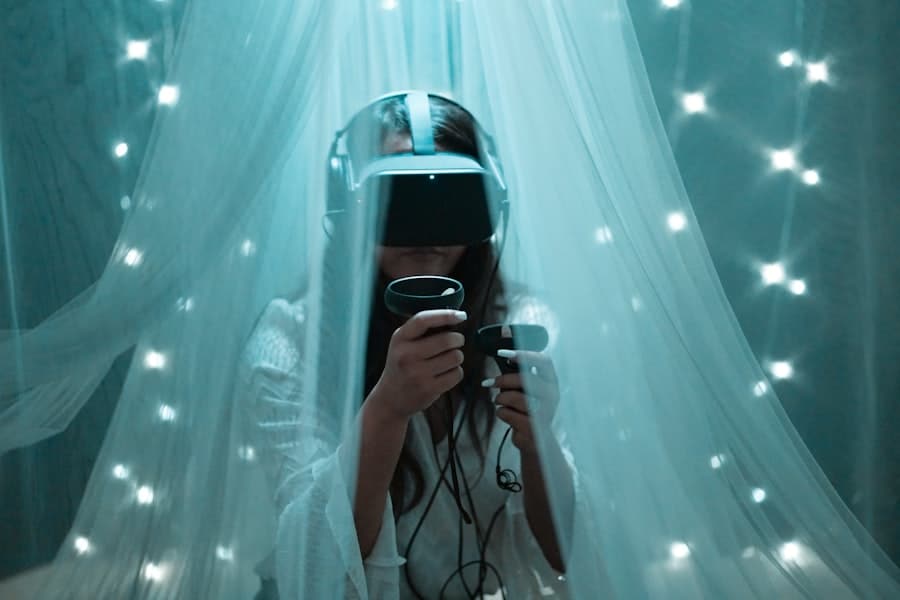Mixed reality (MR) represents a transformative intersection of the physical and digital worlds, enabling users to interact with both environments simultaneously. In the context of industrial equipment maintenance, MR technologies have emerged as powerful tools that enhance operational efficiency, reduce downtime, and improve safety. By overlaying digital information onto the physical environment, technicians can visualize complex data, schematics, and instructions in real-time, facilitating a more intuitive approach to maintenance tasks.
The adoption of mixed reality in industrial settings is driven by the need for more effective maintenance strategies. Traditional methods often rely on paper manuals or static digital displays, which can be cumbersome and prone to human error.
In contrast, MR provides an interactive experience that allows technicians to engage with their work in a more meaningful way.
This capability not only streamlines the maintenance process but also enhances the overall skill set of the workforce, making it a pivotal development in industrial operations.
Key Takeaways
- Mixed reality offers a combination of virtual and augmented reality, allowing for immersive and interactive experiences in industrial equipment maintenance.
- Advantages of using mixed reality in industrial equipment maintenance include improved efficiency, reduced downtime, enhanced safety, and remote collaboration.
- Applications of mixed reality in industrial equipment maintenance range from equipment assembly and disassembly to training and remote assistance.
- Case studies demonstrate successful implementation of mixed reality in industrial equipment maintenance, resulting in significant time and cost savings.
- Challenges and limitations of using mixed reality in industrial equipment maintenance include high initial costs, technical limitations, and the need for specialized training and skills development.
Advantages of Using Mixed Reality in Industrial Equipment Maintenance
The advantages of employing mixed reality in industrial equipment maintenance are manifold, significantly impacting productivity and operational efficiency. One of the most notable benefits is the reduction in training time for new employees. With MR, new technicians can learn on the job through immersive simulations that replicate real-world scenarios.
This hands-on experience accelerates the learning curve, allowing them to become proficient in equipment maintenance much faster than traditional training methods would allow. For example, a technician can practice troubleshooting a malfunctioning machine in a virtual environment before ever touching the actual equipment. Moreover, mixed reality enhances collaboration among team members, regardless of their physical location.
With MR tools, experts can provide remote assistance to on-site technicians by sharing their visual perspective in real-time. This capability is particularly valuable in complex industrial environments where specialized knowledge is required. For instance, if a technician encounters an unexpected issue during maintenance, they can connect with a remote expert who can see what they see and guide them through the resolution process.
This not only saves time but also minimizes the risk of costly mistakes that could arise from miscommunication or lack of expertise.
Applications of Mixed Reality in Industrial Equipment Maintenance
Mixed reality finds diverse applications across various sectors within industrial equipment maintenance. One prominent application is in predictive maintenance, where MR can visualize data analytics and sensor information directly on machinery. By overlaying performance metrics and alerts onto equipment, technicians can quickly identify potential issues before they escalate into significant problems.
For instance, if a machine’s vibration levels exceed normal thresholds, an MR system can highlight this anomaly and suggest corrective actions, thereby preventing costly downtime. Another application lies in assembly and disassembly processes. In industries such as aerospace or automotive manufacturing, where precision is paramount, MR can provide technicians with detailed 3D models of components superimposed on the actual equipment.
This visualization aids in ensuring that parts are assembled correctly and efficiently. For example, during the assembly of an aircraft engine, technicians can use MR to see how components fit together, reducing the likelihood of errors that could compromise safety or performance.
Case Studies of Successful Implementation of Mixed Reality in Industrial Equipment Maintenance
Several companies have successfully integrated mixed reality into their maintenance operations, showcasing its effectiveness and potential for broader adoption. One notable case is Boeing, which has implemented AR technology to assist technicians in wiring harness assembly for its aircraft. By using AR headsets that project wiring diagrams directly onto the physical components, Boeing has reported a significant reduction in assembly time—by as much as 25%.
This efficiency gain not only speeds up production but also enhances accuracy, as technicians can visualize complex wiring layouts without needing to refer back to paper manuals. Another compelling example comes from Siemens, which has utilized mixed reality for maintenance training at its gas turbine manufacturing facility. Siemens developed an MR training program that allows new employees to interact with virtual models of gas turbines while receiving real-time feedback on their actions.
This immersive training approach has led to improved retention rates and a deeper understanding of turbine mechanics among trainees. The success of this program has prompted Siemens to expand its use of MR across other facilities and training programs.
Challenges and Limitations of Using Mixed Reality in Industrial Equipment Maintenance
Despite its numerous advantages, the implementation of mixed reality in industrial equipment maintenance is not without challenges. One significant hurdle is the initial investment required for MR technology. The cost of hardware—such as AR headsets—and software development can be substantial, particularly for smaller companies with limited budgets.
Additionally, integrating MR systems with existing enterprise resource planning (ERP) and maintenance management systems can pose technical challenges that require specialized expertise. Another limitation is the potential for user resistance to adopting new technologies. Many technicians may be accustomed to traditional methods and may feel overwhelmed by the introduction of MR tools.
To address this issue, organizations must invest in change management strategies that emphasize the benefits of MR while providing adequate training and support during the transition period. Ensuring that employees feel comfortable and confident using new technologies is crucial for successful implementation.
Future Trends and Developments in Mixed Reality for Industrial Equipment Maintenance
Integrating Artificial Intelligence for Predictive Insights
One emerging trend is the integration of artificial intelligence (AI) with MR systems. By leveraging AI algorithms, MR applications can analyze vast amounts of data from machinery and provide predictive insights tailored to specific equipment conditions. This synergy could lead to even more proactive maintenance strategies that anticipate failures before they occur.
Advancements in Hardware Technology
Advancements in hardware technology will likely enhance the user experience with mixed reality tools. As AR headsets become lighter, more comfortable, and equipped with better battery life and processing power, their adoption will become more widespread among technicians on the shop floor.
Enhanced Collaboration with 5G Connectivity
Furthermore, improvements in 5G connectivity will enable faster data transmission and real-time collaboration between remote experts and on-site workers, making MR applications even more effective.
Training and Skills Development for Using Mixed Reality in Industrial Equipment Maintenance
To fully harness the potential of mixed reality in industrial equipment maintenance, organizations must prioritize training and skills development for their workforce. This involves not only teaching employees how to use MR tools but also fostering a culture of continuous learning and adaptation to new technologies. Training programs should be designed to be hands-on and immersive, allowing technicians to practice using MR applications in simulated environments before applying their skills in real-world scenarios.
Moreover, organizations should consider developing partnerships with educational institutions or technology providers to create specialized training programs focused on mixed reality applications in industrial settings. By collaborating with experts in the field, companies can ensure that their workforce is equipped with the latest knowledge and skills necessary to thrive in an increasingly digital landscape.
The Impact of Mixed Reality on Industrial Equipment Maintenance
The impact of mixed reality on industrial equipment maintenance is profound and far-reaching. As industries continue to embrace this technology, they are witnessing improvements in efficiency, accuracy, and safety across their operations. The ability to visualize complex data and receive real-time guidance transforms how technicians approach maintenance tasks, ultimately leading to reduced downtime and enhanced productivity.
As mixed reality technology continues to advance and become more accessible, its integration into industrial maintenance practices will likely become standard rather than exceptional. The ongoing development of training programs and support systems will further empower technicians to leverage these tools effectively. In this evolving landscape, organizations that embrace mixed reality will not only enhance their operational capabilities but also position themselves as leaders in innovation within their respective industries.
A related article to How Mixed Reality Is Being Used in Industrial Equipment Maintenance is Best Software for 3D Animation. This article explores the top software options available for creating stunning 3D animations, which can also be utilized in industrial settings for training, visualization, and maintenance purposes. By incorporating advanced animation tools, companies can enhance their maintenance processes and improve overall efficiency in equipment upkeep.
FAQs
What is mixed reality?
Mixed reality (MR) is a technology that combines elements of both virtual reality (VR) and augmented reality (AR) to create a more immersive and interactive experience. It allows users to interact with both digital and physical objects in real time.
How is mixed reality being used in industrial equipment maintenance?
Mixed reality is being used in industrial equipment maintenance to provide technicians with hands-free access to digital information and instructions while they work on complex machinery. This technology can overlay digital schematics, maintenance procedures, and real-time data onto the physical equipment, allowing technicians to troubleshoot and perform maintenance tasks more efficiently.
What are the benefits of using mixed reality in industrial equipment maintenance?
Some of the benefits of using mixed reality in industrial equipment maintenance include improved efficiency, reduced downtime, enhanced safety, and the ability to provide remote assistance. Technicians can access relevant information and guidance without having to refer to paper manuals or digital devices, allowing them to focus on the task at hand.
Are there any challenges associated with implementing mixed reality in industrial equipment maintenance?
Some of the challenges associated with implementing mixed reality in industrial equipment maintenance include the initial cost of the technology, the need for specialized training for technicians, and potential technical issues such as connectivity and compatibility with existing systems. Additionally, ensuring the security of sensitive data and information accessed through mixed reality systems is also a concern.



